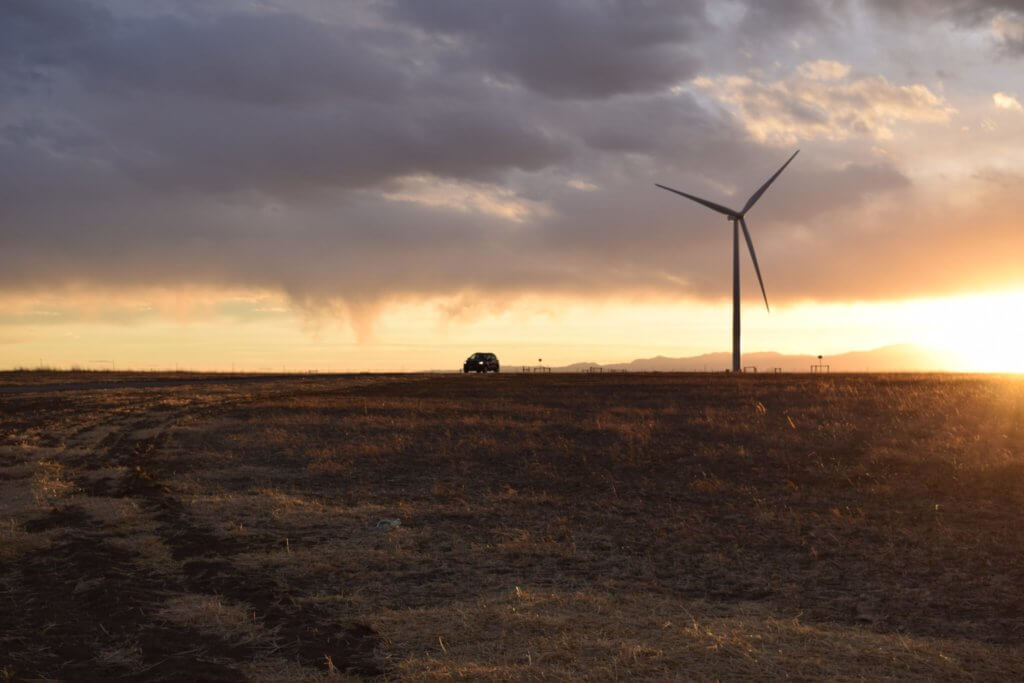News roundup: Colorado cuts CO2 emissions, prepares for low-carbon grid
Colorado is known not only for its stunning natural beauty, but also its ambitious wind power portfolio, supported by an impressive network of wind manufacturers. The state serves as a model for others to follow when reducing their carbon dioxide emissions, which will be useful in responding to the EPA’s proposed new rule for limiting CO2 emissions from existing power plants.
Cathy Proctor pointed out in this week’s Denver Business Journal that while Colorado has work to do to get its carbon emissions down, the state is already ahead of the curve:
- Colorado's target emissions level in 2030, under the EPA's proposal (available here) is for 1,108 pounds of CO2 emissions per net megawatt-hour of electricity that's produced.
- By comparison, according to the federal Energy Information Administration, in 2005 Colorado emitted about 1,827 pounds of CO2 per megawatt-hour of power produced, said Rebecca Gasper, a research analyst with the World Resources Institute who co-authored a paper in 2013 on cutting CO2 emissions at Colorado's power plants.
- And it's a goal that Larry Wolk, executive director of the Colorado Department of Public Health and Environment, said he believes Colorado can hit.
- "We're well on our way, and this validates 10 years of work that's already been going on here in Colorado," Wolk said. "We feel that we're going to be in a good position to meet this goal."
- Ben Fowke, the chairman, president and CEO of Minneapolis-based Xcel (NYSE: XEL), said last week that the utility, which serves customers in eight states including Colorado, expects to have cut its carbon emissions by 31 percent compared to 2005 by 2020. Fowke, in a statement issued Monday, said Xcel has worked with states on plans to cut CO2 emissions for years.
- "The proposed rule is complex, and as we work through it and the upcoming rulemaking process, we will advocate for the continued ability to provide the reliable, affordable power customers need, in an environmentally responsible manner," Fowke said Monday.
The AP’s Kristen Wyatt appeared in The Durango Herald this week, citing Colorado as a “model” for the upcoming EPA standards:
- Out of all the states, Colorado offers the best sneak peek at what the nation would look like once President Barack Obama’s energy regulations take effect.
- Besides a greater reliance on renewable energy, Colorado utilities are among the leaders in converting coal-burning power plants to natural gas, which decreases carbon-dioxide emissions. Colorado has “led the nation over the past decade in confronting this challenge,” Sen. Mark Udall said in a statement Monday praising the state’s carbon emissions work in advance of the proposal by the U.S. Environmental Protection Agency.
- Currently, Colorado has 12 coal plants and gets almost 66 percent of its electricity from coal-fired power plants. Colorado gets about 20 percent of its electricity from natural gas, with the rest coming from wind and other sources.
The Denver Post’s Mark Jaffee points to the success of the Colorado renewable portfolio standard as an important piece of the state’s adaptation:
- It turns out that adding renewable energy to the electricity generation mix doesn’t end up costing all that much, in at least one case it has even saved money. In Colorado the cost came to 1 cent per kilowatt-hour in 2012.
- Among the 24 states with renewable portfolio standards that were analyzed, the cost of complying between 2010 and 2012 was equal on average, roughly 1 percent of retail electricity rates, according to study by two national laboratories.
- There has been upward pressure on the cost of compliance as renewable-energy targets are raised and more renewable sources are added, Barbose said. In Colorado that compliance cost roughly doubled between 2010 and 2012. But since most states, including Colorado, cap the rate impacts of renewable energy the pressure likely will not translate to higher bills.In Colorado, the cost to customers is capped at 2 percent of a residential bill. This Renewable Energy Standard Adjustment raises money to cover the above market cost of renewable-energy sources.
Be sure to check out this week’s other news roundups:
- Wednesday: News roundup: State papers editorialize in favor of EPA rule
- Tuesday: News roundup: Press, public support EPA carbon policy
- Monday: News roundup: EPA announces plan to cut CO2 emissions
Sources:
Cathy Proctor, “Colorado already cutting CO2 ahead of EPA proposed rules.” Denver Business Journal. 2 June 2014.
Kristen Wyatt, “Colorado a model for energy standards.” The Durango Herald. 2 June 2014.
Mark Jaffe, “Meeting renewable energy targets turns out to be inexpensive.” The Denver Post. 3 June 2014.




